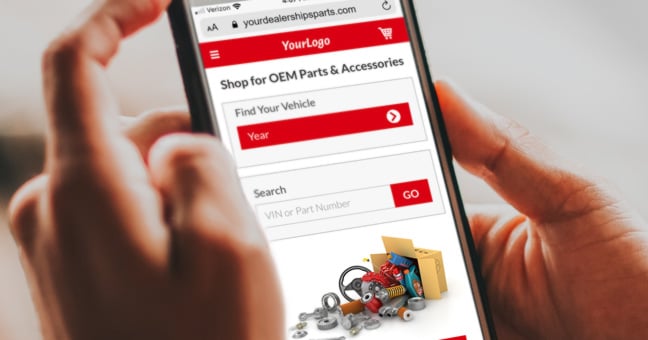

Jul 12 2022
While parts and accessories sales are one of the most profitable revenue streams for your dealership (along with fixed ops), it’s a highly competitive market, especially online. Online part sales are a multi-billion dollar business ($12 billion in 2019, ~$16 billion in 2020), largely dominated by retail giants like Amazon and eBay, along with major aftermarket parts retailers (Auto Zone, O’Reilly, Advanced Auto Parts, etc.)
According to Hedges & Company, in 2019, Amazon sold $8 billion in parts ($5.3 billion 1st party sales), accounting for 2/3 of all online parts sales in the US. And as of the latest study, they were on track to pass $10 billion in 2020. These numbers may be intimidating, but there is still room for your dealership to have a successful online parts business.
In this article, we’ve provided some ways in which your dealership can get started with online parts sales or remain competitive in a noisy market.
Whether you’re targeting the DIYers, small repair shops, or jumping into the highly competitive collision repair business, focus on the advantages you offer over your competitors. This may seem like an obvious statement but is worth mentioning. Some of these advantages may be access to OEM parts and their warranties, or product knowledge.
RevolutionParts and Garry Ricci from Quality Dealerships had a great webinar with DrivingSales on this topic and discussed how each customer has certain trigger points, or requirements, such as price, free shipping, fast shipping, OEM parts, etc. For example, OEM parts may be a trigger for one customer, while another customer primarily cares about 2-day free shipping.
Certain customers will be more drawn to the Amazon or aftermarket experiences that your dealership simply cannot offer. However, as long as your parts are priced competitively and you’re fulfilling orders in a reasonable time, there will certainly be a market looking for the OEM parts and expertise you can offer over your competitors.
Not only is Amazon a great benchmark when it comes to order fulfillment, but the online shopping experience they offer is a great example to model after. An intuitive user experience is crucial to a successful ecommerce business.
One area that your dealership can particularly excel in is the ability to leverage a wealth of data from your DMS, coupled with a VIN data and parts data solution, to provide highly accurate fitment data. As Mike Rich at RevolutionParts mentioned in the webinar, part fitment data is a big deal.
Much of your audience may want to take a hybrid approach where they research information about the parts they need, and maybe even purchase them online, but still have the option to pick up at a physical location, especially if shipping isn’t a fast enough method. Therefore, it’s paramount to make sure you can offer a seamless online and offline experience.
You have a significant leg up on the online-only retailers in this regard – for buyers in your area. And if competition with aftermarket retailers is still a big concern, offering parts delivery may be worthwhile.
Selling parts online gives your dealership the ability to reach a wider geographical audience, however, you also have a database full of customers who will have a need for parts at one point or another. Your dealership is probably already doing a great deal of marketing to drive customers into the service lane; however, targeted marketing can be very effective for your parts department as well. And with flexibility of purchasing parts online or in-store, these customers will likely be more apt to buy from you as you’ve already built a report. Additionally, this is a great way to further your relationship for future vehicle purchases and services.
Regardless of how successful your dealership is at marketing and selling parts within your own channels, there is still money to be made selling on 3rd party channels such as Amazon and eBay as well – if your dealership has the bandwidth. The cost associated with selling parts on a 3rd party site (3rd party fees, PayPal fees, etc.) may be off-putting, however, Ricci put it nicely, “One way or another, you are going to pay to get an order. Whether it's on eBay or Amazon [or Google Ads/Facebook] everyone gets a slice of the pie."
It may take a little testing to determine which parts you should sell on these sites and at which price point. "You don't necessarily want to be the lowest on everything. You still have to pay to pull the part and to ship it,” according to Jay Rankin, Parts Manager at Earnhardt Toyota. However, a combination of right-pricing the most profitable parts and offering a great 3rd party experience with quick response times to customer communications and comparable order fulfillment speed can offer another revenue opportunity for your parts department.
There are many ways for your dealership to be successful in the online parts retail business, amidst the strong competition. According to the DrivingSales webinar, only 1 in 5 dealers are selling parts online. As more of the auto industry continues to move online, even digital car retailing, it’s worth considering. And if you have already set up an online store for your dealership’s parts department, we hope some of these pointers will get your wheels turning (pun intended).
If you have a need for VIN decoding services to help improve the accuracy of vehicle identification, we’d be happy to discuss our offerings with you. You can request more information here. In the meantime, learn about some of our parts and service data products here.